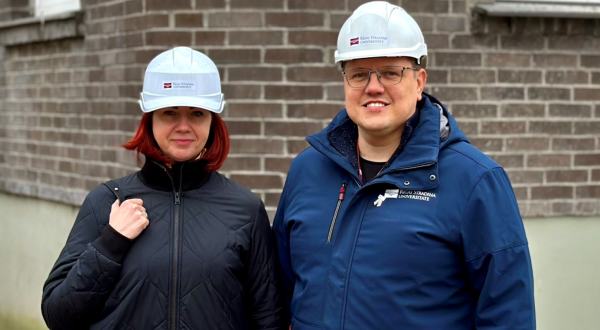Student Snapshot: Holiday Traditions from Around the World
To get into the holiday spirit, and to reflect the diversity of students at Rīga Stradiņš University (RSU), we will be compiling a description and photos of different holidays and traditions that RSU students celebrate throughout the holiday season.
- Simona Costa (Italy), Vice President of ASiR: Interactive Nativity Scene
Italian Student Association in Riga (ASiR)
The presepe (nativity scene) is a representation of the birth of Jesus, which originates from ancient and mediaeval traditions. The custom of setting up a nativity scene at home during the Christmas period that is widespread today in all Catholic countries of the world originates from Italy.
/Student_Snapshot/italy_presepe_2.jpg)
Simona's grandmother's presepe.
The figure of the Child Jesus is placed in the manger at midnight between 24 and 25 December, while the figures of the Magi are added to the scene to adore and worship Jesus on the day of the Epiphany (which in 2022 falls on January 6).
/Student_Snapshot/italy_presepe_3.jpg)
- Thelma Guðný Ragnarsdóttir (1st year Dentistry student, Iceland): 13 Santa Clauses!
What Icelandic Christmas traditions do you and your family keep every year?
On 12 December, all Icelandic children put a shoe in the window, because the first Santa Claus (out of 13) comes to town and leaves gifts in the shoes!
All children need to behave otherwise Santa Claus could leave a potato in their shoe, which means they’ve behaved badly!
/Student_Snapshot/iceland_8.jpg)
/Student_Snapshot/iceland_5.jpg)
We decorate our homes inside and outside with lights and even put out a cross with lights on it for our relatives in the graveyard.
What traditional foods do you prepare?
One of our traditions is that we eat rice pudding for lunch on 24 December. One of the bowls will have an almond hidden in it and whoever gets this bite wins a present! Usually, the present will be something that the whole family can enjoy together, like a card game.
What's a distinctive memory you have from celebrating Christmas as a child?
/Student_Snapshot/iceland_6.jpg)
On the days leading up to Christmas we bake a lot of different kinds of cookies together. On 23 December, we always go out to eat kæst skata (a rotten fish called skate). It’s an acquired taste and has a really strong smell! A lot of people don’t like it, but someone from every household always brings this smell home with them after eating it.
- Michal Korobochka (4th year medical student, Israel): Hanukkah
RSU Jewish/Israeli Student Society Yachad
We usually celebrate Hanukkah in December. The holiday lasts 8 days and kids stay home from school and kindergarten. Oil features throughout the holiday and the tradition behind this is, that in ancient times there was only enough oil to light the menorah (a multi-branched candelabra that holds the Hanukkah candles) for one day, but a miracle happened and the oil ended up lasting for 8 days! People now light a hanukkiah that holds nine candles. One for each night of the holiday, and an extra one with which to light the others. All the food traditions involve oil too. We eat sufganiyot and levivot (pictured below). Levivot are potato pancakes and sufganiyot are like donuts without the hole. We also have something called sevivon that the children play with. It’s also tradition to give children money, either real or chocolate coins.
Every evening, families come together and light up the hanukkiah and eat traditional foods. We say blessings and prayers when we light up a candle.
/Student_Snapshot/hanukkah_1.jpg)
As you can see from the picture, this was the fourth day of Hanukkah because only five candles have been lit. The extra one is called the shamash. That’s the one used to light the others.
These are the sevivon that the kids play with. As you can see there is a letter on each side that spell out ‘Nes gadol haya sham’ (‘A great miracle happened there’). In Israel, one of the letters is different changing the meaning to ‘Nes gadol haya po’ (‘A great miracle occurred here’).
/Student_Snapshot/hanukkah_2.jpg)
Related news
 RSU is growing and developing: major reconstruction underway in the main buildingDevelopment, For RSU Employees, For Students
RSU is growing and developing: major reconstruction underway in the main buildingDevelopment, For RSU Employees, For Students


